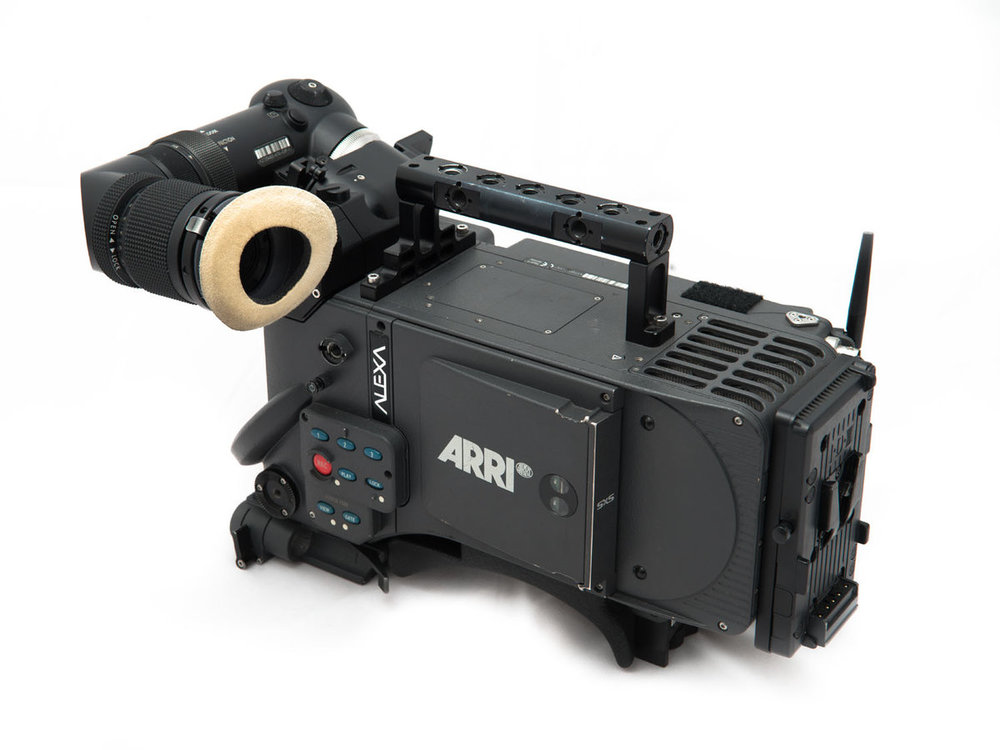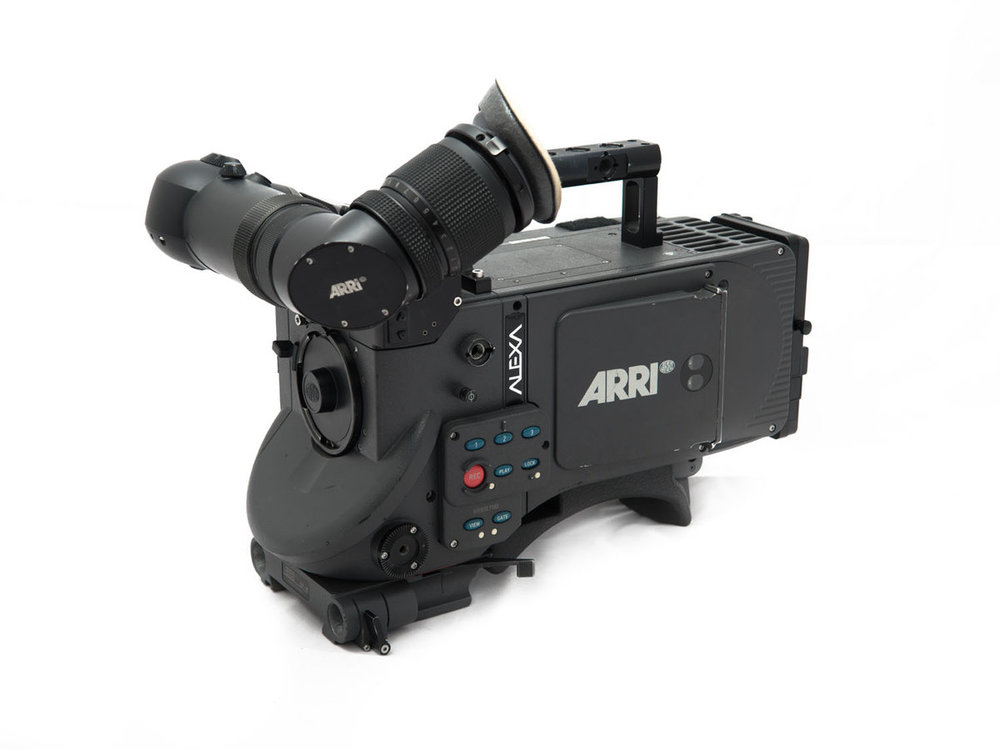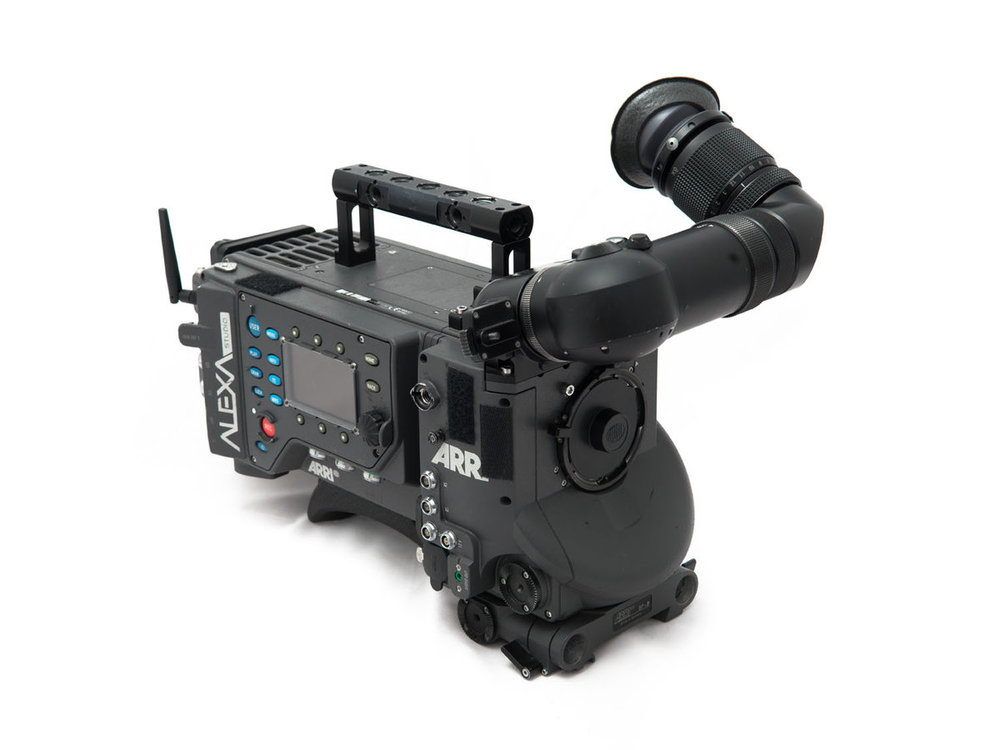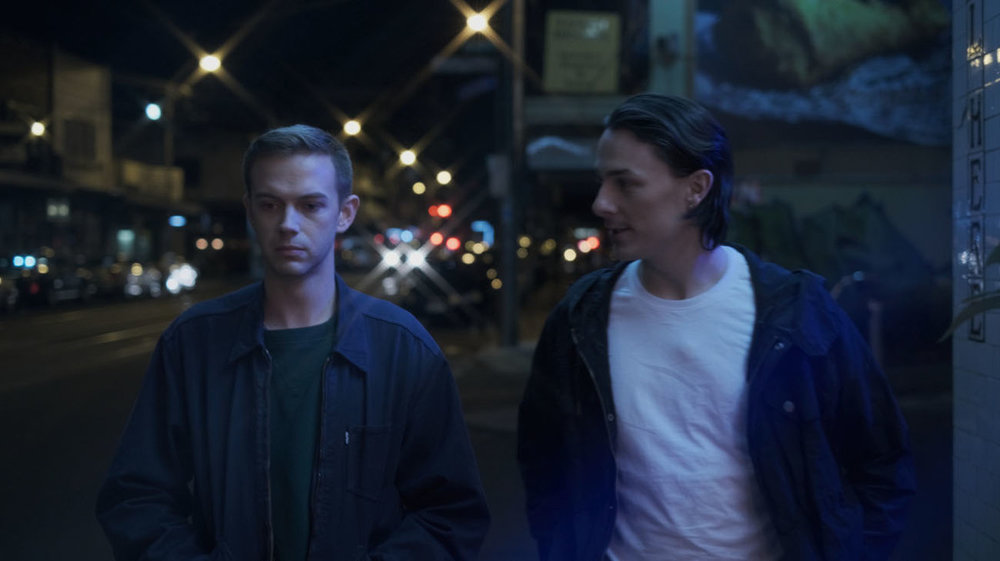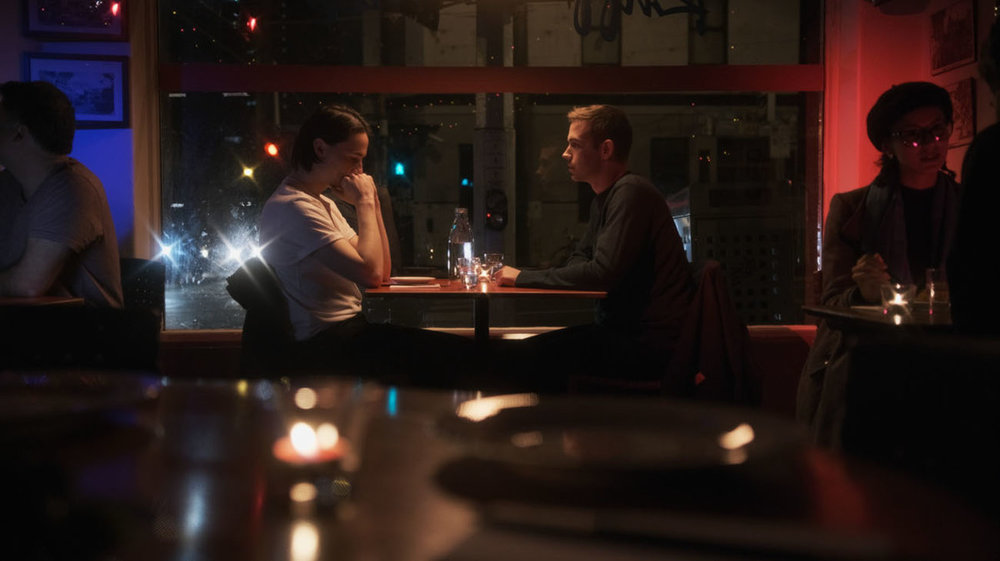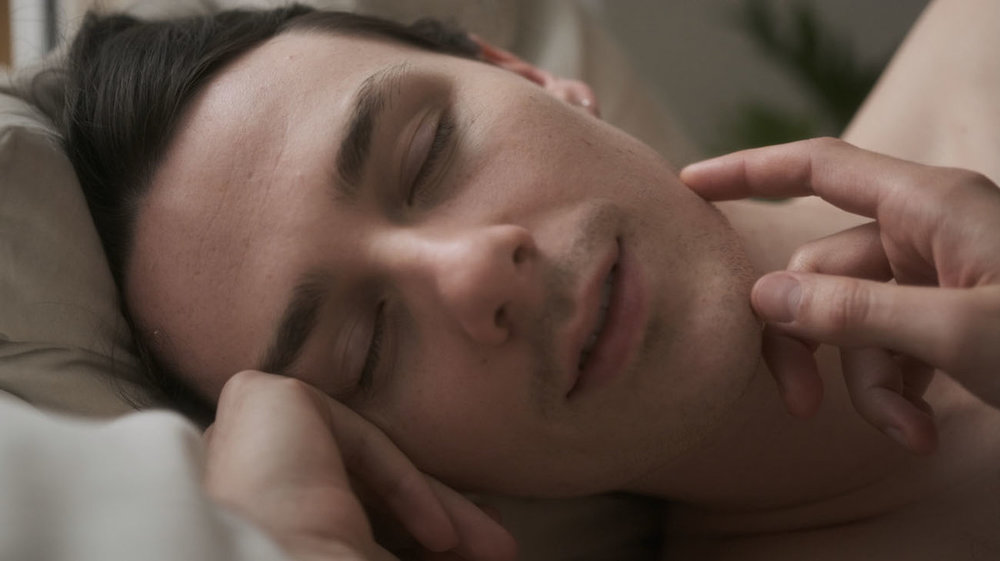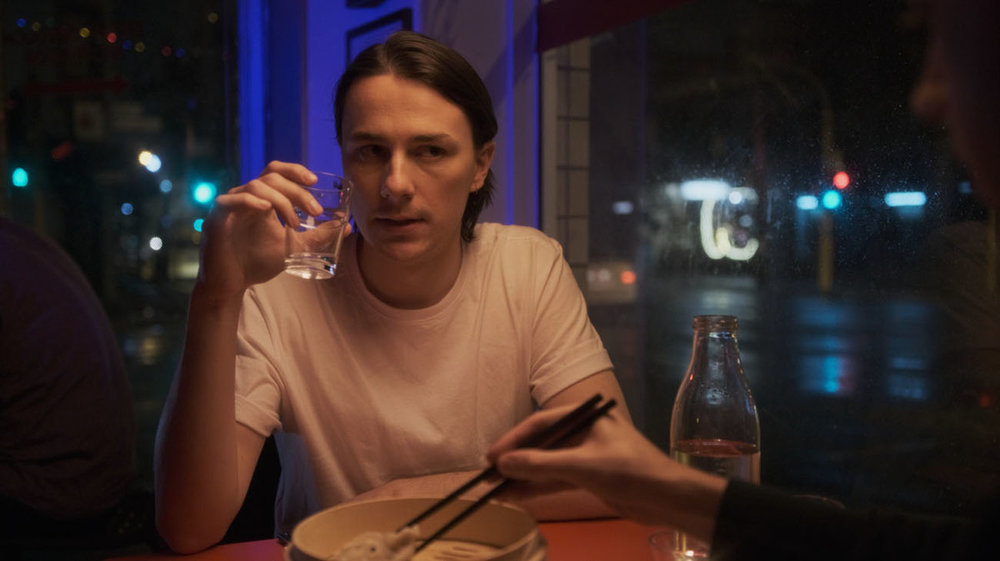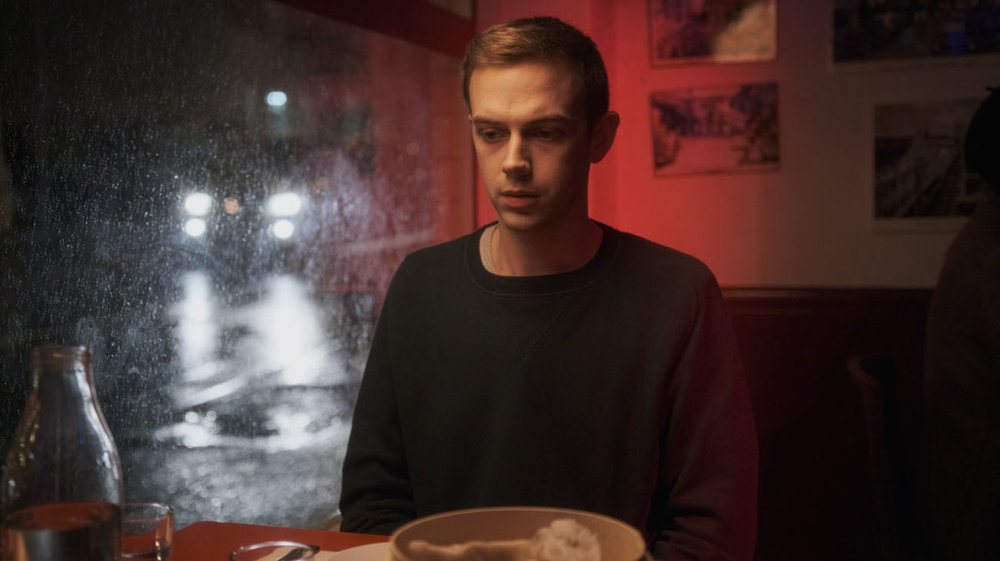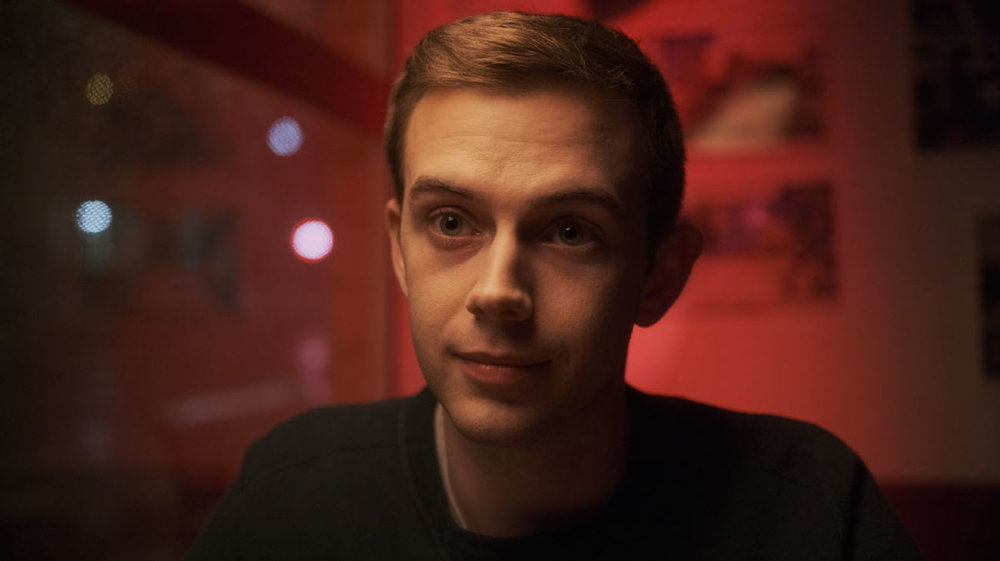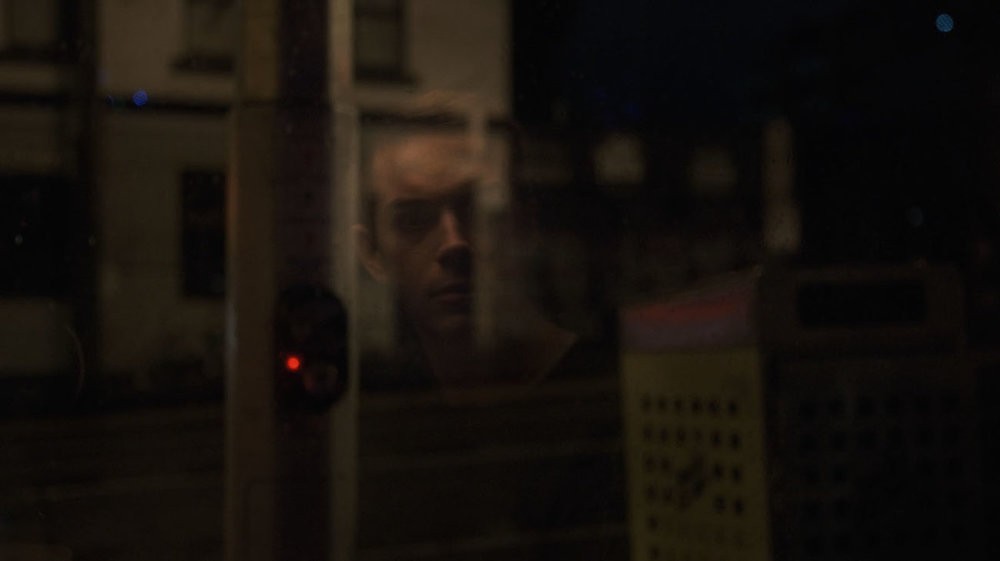-
Posts
1,536 -
Joined
-
Last visited
Everything posted by Mark Kenfield
-
There isn't a rental house here in Australia that will rent gear to you for the first time without a hefty deposit. After that first successful rental (i.e. you bring the stuff back) they "verify" you on their books, and don't charge you deposits any more. It's just a safety measure (and not unreasonable really, given the high price and portability of the gear).
-
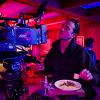
Sodium Vapor Bulbs for practicals?
Mark Kenfield replied to Jake Wolfert's topic in Lighting for Film & Video
A recipe I've always liked for creating a "sodium vapour" vibe, is tungsten with full CTS, with the camera balanced for 4500k. -
Unless you particularly need 4k, I’d go with the gold standard for fictional work (ze Germans). The F65 is an incredible camera, and makes terrific images. But it’s not very popular, which makes sourcing accessories/support for it, and finding ACs and colourists who know how to work it, much harder than the alternative.
-
Arri dovetail based systems would be my recommendation, nothing else has as much flexibility for placing your shoulder pad directly under the camera’s centre of gravity.
- 1 reply
-
- shoulder rig
- shoulder mounts
-
(and 1 more)
Tagged with:
-
The F55 is better in every way. Colour, motion cadence (due to that lovely global shutter), evf, ergonomics. There’s a reason no one has shot $100+ million TV series on the FS7. The F55 has done a bunch of them.
-
I used LUTcalc to create some LUTs that transformed SLOG/SGamut footage over to Sony's LC709A Rec709 LUT. And another that converted SLOG/SGamut to SLOG3/SGamut3.cine so that I could drop the more common LUTs for the F5(5), FS7, Venice etc. on to the F35/F3 footage with minimal fuss. I really liked what I was getting from the Venice's S709 LUT when layered onto the converted SLOG footage. Gives lovely colours.
-
Can you post some more detailed photos of the rig? Would make it easier to advise you based on the kit that doesn't need to be replaced. Do your Shape handles attach to rosettes on the baseplate? Or are they mounted on your 15mm rods? Top plates are top plates, and they really don't vary much between the brands, so if you're not willing to go back to the default Sony handle (which does work nicely) nothing is really going to save you much weight-wise on top of the camera, so you might as well stick with what you have there. If it's just your top handle that you're not happy with, I'd HIGHLY recommend the Berkey System Versahandle. It attaches via NATO rail, which is rock solid and can be adjusted really fast. It's just fantastic allround (and lets you use 15mm rod clamps/15mm spuds to mount accessories - which is faster and more secure than any other option I've encountered): http://store.berkeysystem.com/quick-release-handle-for-sony-f5-55-with-sony-evf-mount/ As for baseplates, all of the "universal" ones (like the one you have now) have always struck me as silly, they mostly don't give you enough adjustment to put the shoulder pad directly under your camera's centre of gravity (particularly with a couple of kilograms of glass up front, like your CZ.2 zoom). And the Sony V-mount tripod connection thing is kinda crappy too. What will shave a TONNE of weight off your rig, is to switch to either the Bright Tangerine "Left Field" baseplate (for Venice, F5, F55), or to the Wooden Camera "Unified" baseplate: https://www.brighttangerine.com/store/sony-venice-bmd-ursa-pro-riser-for-left-field-baseplate/ https://woodencamera.com/products/unified-baseplate-sony-venice-rialto-f55-f5-ursa-mini These two baseplates are basically doing the same thing, they give you 15mm LWS rods (that can be separately secured both at the front and rear of the baseplate), and they attach to Arri-standard dovetails. This is the golden combination. Why? Because it's using the minimum amount of metal possible to give you both 15mm LWS rods, and a dovetail clamp. You then simply attach an Arri dovetail to your tripod (for easy counterbalancing of your camera on the tripod head), and you add a Arri dovetail based shoulder pad to your kit (like this one from wooden camera): https://woodencamera.com/products/shoulder-rig-v3-dovetail-and-shoulder-pad-assembly?_pos=1&_sid=5d841025f&_ss=r So that you adjust the position of your shoulder pad to DIRECTLY underneath your camera's centre of gravity (which is obviously a huge deal for handheld work). If your Shape handles are rod mounted, you won't have to add anything else to the kit, but if they're rosette-mounted, you'll also need this cross bar: https://woodencamera.com/products/crossbar-v3-pivoting-arri-rosettes?_pos=1&_sid=bf0a180f5&_ss=r A setup like this will allow you to jump easily from tripod to handheld, you just slide off your tripod dovetail, and slide in your shoulder-pad dovetail. And it gives you the most adjustability possible with the lowest weight possible.
-

How much $$ do the top DP's make?
Mark Kenfield replied to Daniel D. Teoli Jr.'s topic in General Discussion
Was that just for the shoot, or for pre-production as well? -

It is hell being an old cameraman
Mark Kenfield replied to Daniel D. Teoli Jr.'s topic in General Discussion
Ouch! Sending good thoughts your way Greg. Get well soon. -

The Tattoo - Directed by Ian Power
Mark Kenfield replied to Miguel Angel's topic in On Screen / Reviews & Observations
Congrats Miguel, very cool! Good luck!- 35 replies
-
- 1
-

-
- Ian Power
- Teach Solais
-
(and 2 more)
Tagged with:
-
Yep… it’s the Deakins camera. I’m gutted to have to do this, but the doctors have ordered a downsize (for my mangled spine) and I have to move back to a smaller/mini-er camera package. So I’m putting my beloved Arri Alexa Studio up for sale. It’s got all of Arri’s usual teutonic deliciousness, but unlike other Alexas, this one comes with the added benefits of a true global shutter, internal ND, and the real camera operators delight - a proper optical viewfinder. For me it was largely the global shutter that drew me to the Studio. The motion cadence is perfect, pans are perfect (no matter the speed), handheld operating doesn’t skew the image in any way as you bump along. Strobing lights and muzzle flashes can’t cause those horrible CMOS striping artefacts that you’ll see on rolling shutter cameras (and the retakes that go with them). It really does step things up a notch in the overall image. And the optical viewfinder? You realise pretty instantly the difference it makes. It allows you to operate the camera in real-time. Modern EVFs are getting better and better, but they still have milliseconds of delay - and you’ve fought against them every time you’ve tried to follow an actor jumping or standing up quickly, or detailed insert shots with precise movements within the frame - being able to respond in real-time means you can follow specific actions precisely, and it’s a wonderful, wonderful thing as a camera operator. It really does translate into fewer takes being needed. So the standout features of the camera are: - HD/2k Prores4444 and DNxHD - 2.8k Arriraw - Up to 120fps - Global Shutter - Internal ND - 4:3 Anamorphic Sensor - Alexa Plus Module (for full integration with the WCU-4 or SXU-1) The camera is in excellent used condition, and has never skipped a beat for me. It has a moderate 2700 hours on the clock (so thousands of hours of life left in it). It has everything you need to get shooting, including a full seven 64GB SxS cards (so you won’t be out another couple of thousand dollars just to get enough recording media to shoot for a full day). The included accessories with the camera are: - Alexa Studio Optical Viewfinder OVF-1 - Viewfinder Extension Medium FE-5 - ARRI Heated Eyecup HE-4 (so you never have to deal with a fogged-up viewfinder) - Ground Glass 4:3, Spherical - Ground Glass 16:9, Spherical - Frameglow Mask 4:3 and 16:9 Spherical - Ground Glass 4:3, Anamorphic 2x - Frameglow Mask 4:3, Anamorphic 2x - Ground Glass Tool - Alexa Studio VF Port Cover - Alexa Studio Electronic Viewfinder Adapter, EVA-1 (for attaching Arri’s EVF-1 if you need to) - ARRI Bridge Plate BP-8 - Alexa Center Camera Handle, CCH-1 - Alexa Handle Extension Block, HEB-2 - Alexa Leveling Block, LB-1 - V-Lock Battery Adapter, BAB-V - Alexa Shoulder Pad – SP-3 - AC Power Supply - 5pin XLR Audio Splitter Cable - 7x 64GB SxS Pro Cards - Sony SBAC-US30 USB3 SxS Card Reader - Rods 19 x 340mm - Compact and Rugged Custom Flight Case I’ve loved this camera more than any other (and I’ve known a few). It just works, and delivers beautiful images every time. It’s easy to see why it’s Roger’s pick of the bunch. If you have any questions about the camera, feel free to get in touch. $16,500 USD / €15,250 EUR / $23,900 AUD (+GST if sold in Australia) Located in Melbourne, Australia, but happy to ship worldwide. Cheers, Mark
-
It looks like a terrific one-man-band camera to me. I think 10-bit 4:2:2 XAVC is a much more appropriate codec for those kinds of shoots than Canon Raw Lite or the 8-bit video codec on the C200.
-
I don't think you can set custom framelines on the F55. You'll need to get an external monitor or EVF that has that functionality. The Odyssey 7Q is great, it will let you create whatever aspect ratio you want.
-
I just shot a little short over past couple of days and (for the first time) did the whole thing with nets. We had originally planned to shoot anamorphically to lend a more chaotic feeling to the backgrounds, but at the last minute, my budget for camera got slashed, so the anas were out, and I decided to bring in nets instead to add some texture to the bokeh and soften the image a little. With the tighter budget I had to shoot on my little Fuji X-T3s instead of the Alexa Studio (my first time shooting a narrative piece entirely on a little mirrorless/DSLR camera). The little Fujis generate a VERY detailed 4k image, so I wanted to soften it up a bit. I ran some tests on various materials, and different densities of Black Promist, and compared rear-mounted nets to my Tiffen Softnet Black 1 filter as well. Ultimately I settled on using something quite unusual - it's a fibreglass mesh from the hardware store (primarily intended for use as a flyscreen). I was interested to see what the flyscreen would do, as being a solid black material, I wondered if it would create cleaner flares with less chromatic artifacting. It turned out I'd guessed right, and it yields really clean cross-hatched flares around sharp highlights, whilst providing a gentle softening of detail. I'm really quite taken with the look. I paired it with an 1/8 Black Promist to add a little extra glow to the highlights as well:
-

Shoulder / chest support...what do you recommend?
Mark Kenfield replied to Daniel D. Teoli Jr.'s topic in General Discussion
What you want is a monopod. -
Well it worked a treat ? plays beautifully without destroying the contrast. I’ll have to try and track some down.
-
Gorgeous frame Sat ? what lenses gave you that lovely flare?
-
Hearing nothing but praise for it Greg. Looking forward to checking it out on the big screen when it makes its way down under. ?
- 83 replies
-
- 1
-

-
- robert de niro
- dc films
- (and 8 more)
-

Panasonic Lunix S1H full frame 6k camera announced
Mark Kenfield replied to Brian Drysdale's topic in Panasonic
Skintones, highlight rolloff, rolling shutter performance, and battery life are the things I’d love to see in detail. Some 10-bit 4:2:2 vs 10-bit 4:2:0 comparisons would be great as well. And a look at the highest quality (10-bit? 4k?) 60fps the camera can do ? It sounds remarkably powerful on the basis of specs. -
Looks stunning! I’ve given up on the movie franchise, but given that Greig shot (in my opinion) the one Star Wars sequel that’s lived up to the greatness of the original three. I’ll give this a shot. Pedro Pascal is always excellent too.
- 22 replies
-
- the mandalorian
- disney+
-
(and 2 more)
Tagged with:
-

Noise and Color - Indie Feature
Mark Kenfield replied to AJ Young's topic in Please Critique My Work
Looks really nice AJ ? those Kowas have the magic. Good choice. -

A Hidden Life / Malick / Jörg Widmer
Mark Kenfield replied to Tim Tyler's topic in On Screen / Reviews & Observations
Looks like Mallick may have finally returned to something approaching structured narrative! ? (if the trailer is anything to go by, at least). Colour me interested. -

Disadvantages with filming 50fps?
Mark Kenfield replied to Matt Silvan's topic in Camera Operating & Gear
If you've shot at a shorter shutter angle, there's really not much you can do. The reduced motion blur is going to add a certain amount of shuddering to the image. There are a couple of bit of software that can attempt to add motion blur back into the image. But they're far from perfect. -
Sorry Jeff, just seen your post. I've always used external recorders with the F3. The internal 8-bit recording isn't up to snuff for a mastering codec. But the 10-bit Prores 4:4:4 most certainly is. I've also just listed the camera for auction on eBay (if anyone's interested): https://www.ebay.com.au/itm/143356574635
-

Sky panel S60 or litegear lite tile 4x4?
Mark Kenfield replied to Dominik Bauch's topic in Lighting for Film & Video
If one-man band operation is on the cards - go with flexible LEDs or something like the Lite-Tile. It really does make a difference when you're having to squeeze everything onto a single trolley, and the stands and shotbags you can carry with you are limited. I have the Fomex FL1200 2x1 Flexible LED, and I'm a big fan of it. I got it because it has a bit more output than the equivalent Aladdin and Westcott flexibile 2x1s, and the colour is excellent. You can do a lot with even just a pair of 2x1s (stack them lengthwise so that you have a single 4x1 source, and they make a flattering keylight without any additional diffusion. The 4' LED tubes like the Quasars and Asteras are really nice too. put 3 or 4 of them in a bracket and you have enough output to balance with daytime windows (if you've got them close to the source). And the length means you can get a flattering key with plenty of wrap without additional diffusion. Heck, the new Aputure 300D MkII looks like a great option too. Lots of output, and pair it with their Lightdome II (which sets up really fast), and you have a nice, fast system. There's LOTs of great options out there these days. I'd suggest nailing down the specifics of how you usually need to deploy the gear, and then opting for something that will be easy to use within those conditions. I don't do much doco work, so having to finagle my more conventional narrative/commercial lighting and grip kit into working in those more limiting conditions, can be a real pain sometimes. Having gear that's "fit for purpose" is key.



